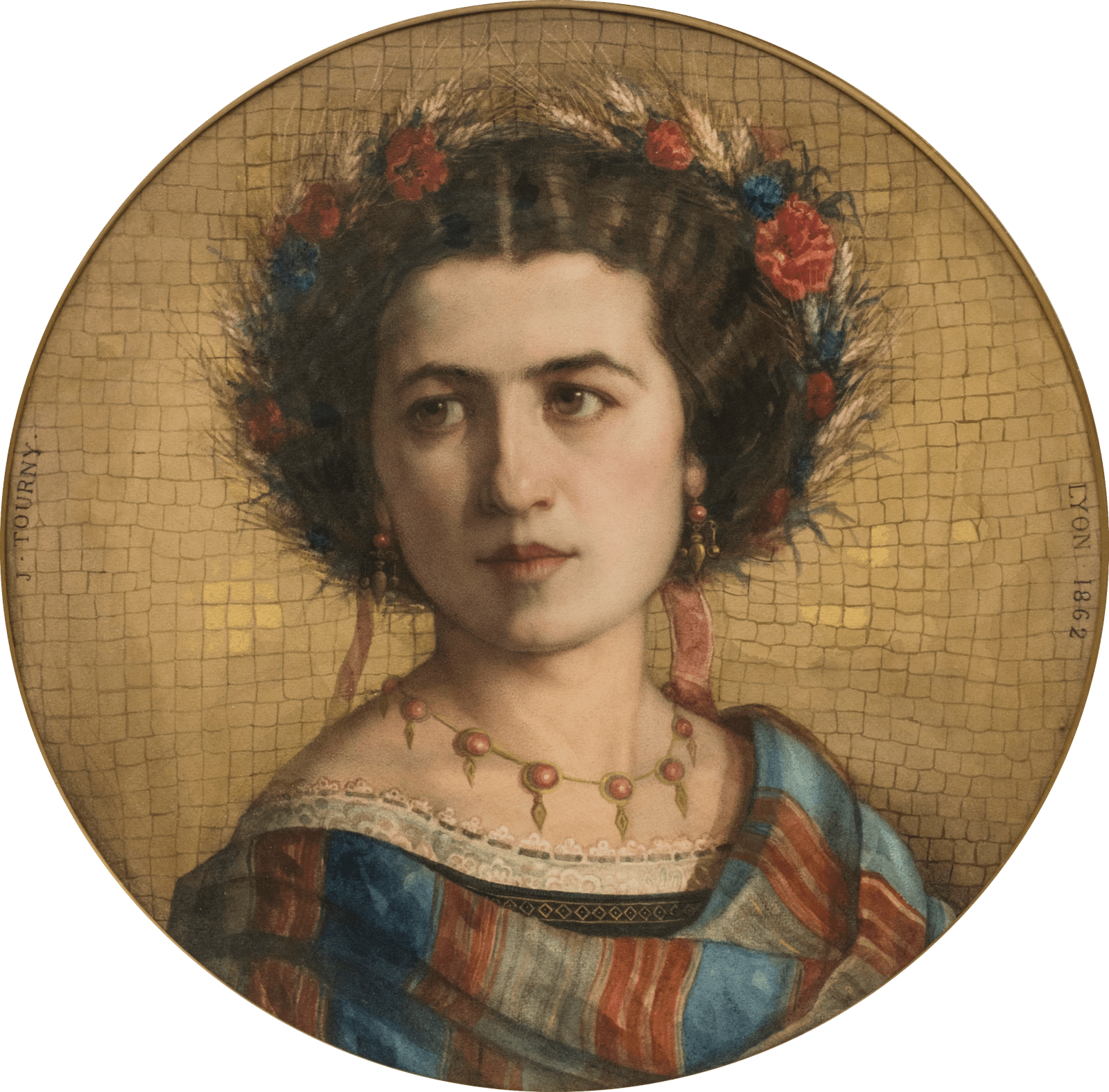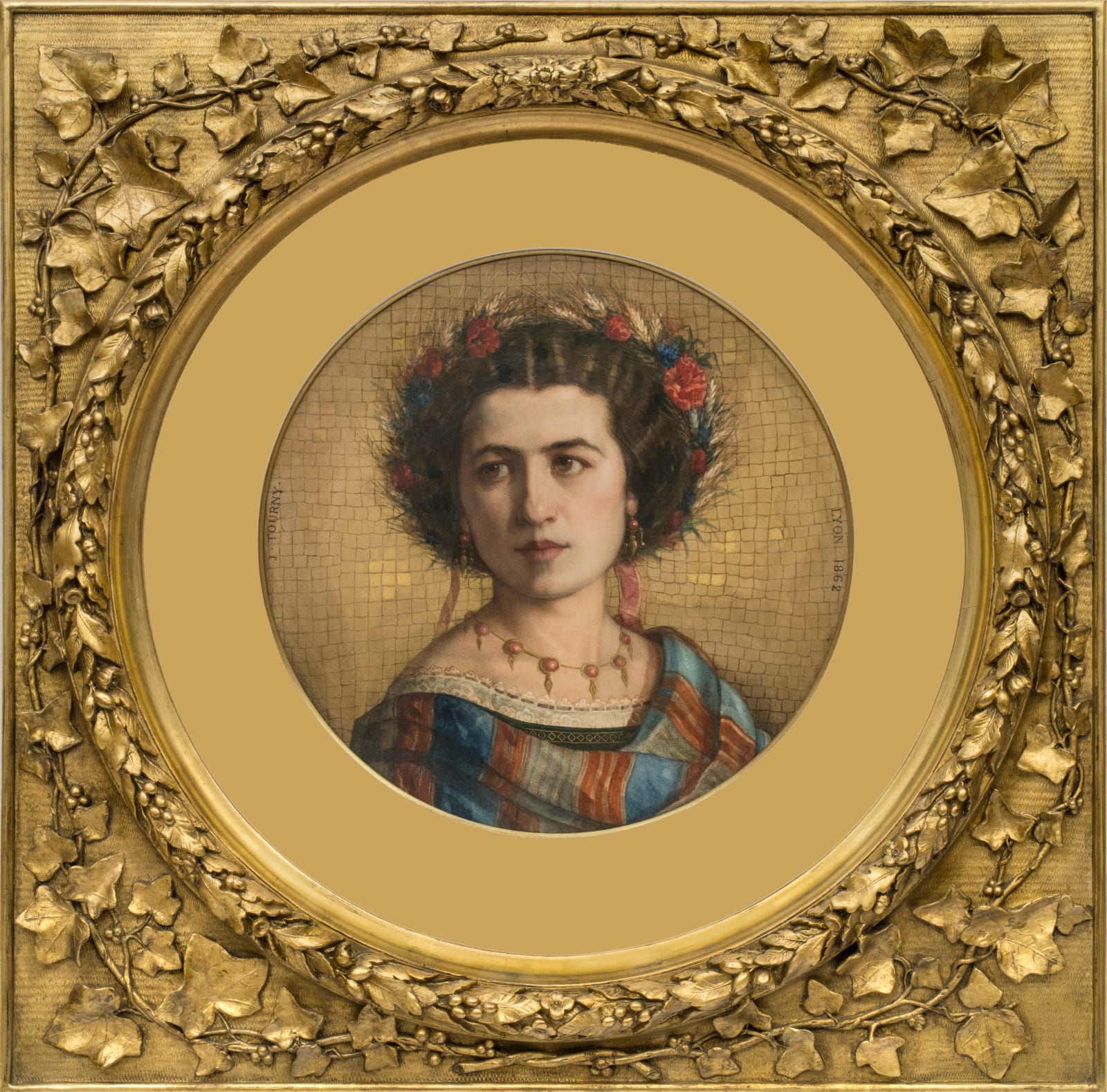 Sold to the Minneapolis Institute of Art
Sold to the Minneapolis Institute of Art
 Sold to the Minneapolis Institute of Art
Sold to the Minneapolis Institute of Art
Joseph Gabriel Tourny (1817-1880)
Early in his career, Tourny studied under the history painter and cofounder of the Société Nationale des Beaux-Arts, Louis Martinet (1814-1895). The artist also briefly held a position in 1846 as an upholsterer at the renowned Gobelins Manufactory, the historic tapestry factory responsible for supplying the royal court of the French monarchs. Tourny spent a substantial amount of time in Rome, traveling to Italy to copy its famed masterworks as early as 1844, the year he placed second in the Prix de Rome. In addition to the city’s abundance of museum treasures, Tourny was undoubtedly taken with the architecture and design of the ancient city, including the medieval mosaics that once decorated villas and churches.
Allegory of Summer is a beautiful example of Tourny’s bravado as a watercolorist and a testament to referencing Byzantine polychrome mosaics he would have encountered during his Italian sojourn. Home of the most beautiful golden mosaics, we do not know a direct source of inspiration for this trompe l’oeil that magically animates an allegorical mosaic. Behind the delicately painted portrait, the draughtsman has carefully rendered hundreds of tesserae, the minute Roman tiles produced to embellish decoration schemes throughout the city. His musing model, wearing ancient Roman jewelry and classical hairstyle finished with flowers and sheaves of wheat, supports her identity as an allegorical depiction of summer. Originally accompanied by a pendant, Allegory of Winter, the two portraits were possibly already separated by the end of the nineteenth century, when they sold individually at auction in 1894.
Provenance
Sale, Paris, 26 November 1894, Summer and Winter, Two Female Heads, FRF 465 et 485
Private collection, France
Sale, De Baecque d'Ouince Sarrau, Lyon, 11 March 2019, lot 354
Ambrose Naumann Fine Art, New York
Exhibitions
Benezit Dictionary of Artists, online, 2011

